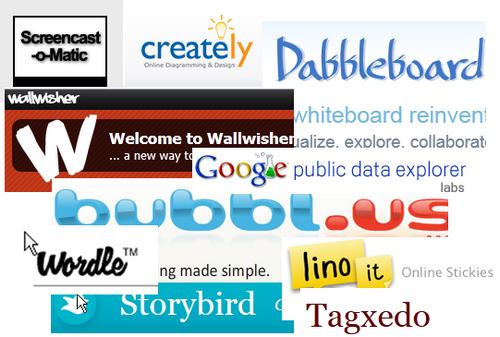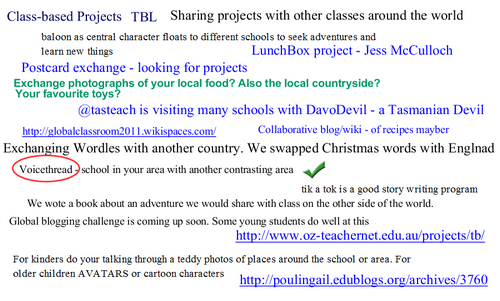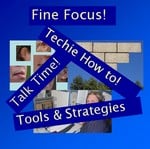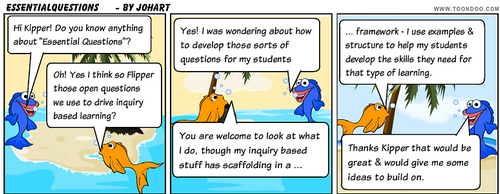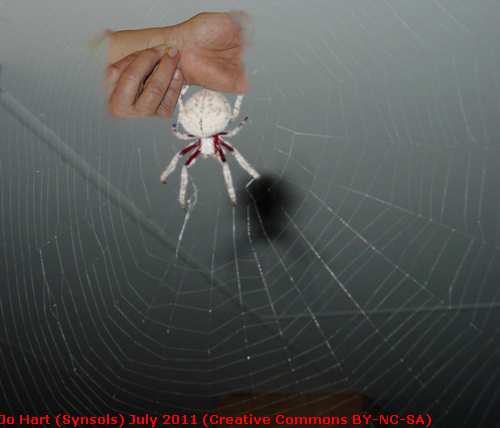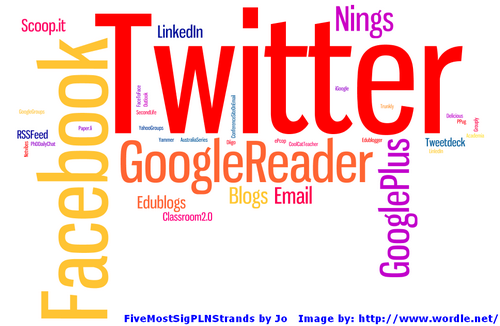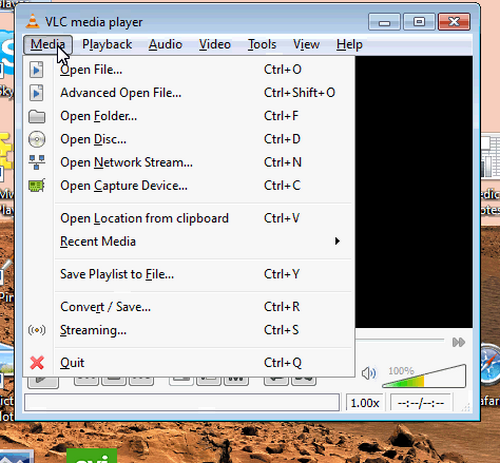Introduction
This Fine Focus session was a little different from usual! I am always trying to think of new topics and different ways we can approach these in our virtual room. As most of you know I have a permanent “bee in my bonnet” about the webinars being participative and interactive and I try very hard to avoid sessions where I talk too much! This session was (I think) very interactive as well as exciting – checkout the recording and see what you think.
The idea behind this session comes out of my desire to always have some – easy to learn, quick to use and no need to register – online tools at my fingertips. Many of my students (previously face-to-face and now online) lack motivation and engagement – they are often unwillingly in education/training – so being able to give them a task that involves using a quick to learn tool to create a visual outcome can be an effective engagement strategy.
The Session
For the session I collected together ten links to what I hoped would be small easy to learn and use online tools. Some of these I was already familiar with, some I had heard of but not used and some were completely unknown to me and found through a search for a type/function of tool.
We started with a series of quick polls to gauge familiarity with each of the ten tools. The degree of familarity ranged from some people using a particular tool quite regularly to at least one tool with no-one having any experience of its use.
The main part of the session was based on a quick exploration of a chosen tool by each participant. For this we had a table of the tools and everyone put their name beside the tool they were going to explore. We then allowed a timed ten minutes to “play” with the tool – the rationale being that if it took much more than ten minutes to use at the most basic level then it would not be very useful with students as a quick re-engager.
The Tools – Function and links (these are in no particular order)
- Online screen recorder – Screencast-o-matic
- Online collaboration application – Dabbleboard
- Online mind mapping/brainstorming tool – Bubble.us
- Online dataset explorer/visualiser – Google public data explorer
- Online diagramming application – Creately
- Online story making tool – Storybird
- Online wordcloud generator – Tagxedo
- Online wordcloud generator – Wordle
- Online notice board maker – Wallwisher
- Online notice board/note taker – Linoit
The “playtime” was followed by quick evaluations from individuals of their chosen tool against the following criteria: ease of use; how quick to learn; potential usefulness with students.
Conclusion
This different way of running the session was exciting for me and seemed to be very much enjoyed by everyone. I really loved the evaluations and comments from everyone on the tools they had explored. It felt like a very valid way to investigate tools that we might ask students to learn and use very quickly. I am well aware that if I can’t use the basics of a tool in 5-10 minutes then it is unreasonable of me to expect my students to do so. I think if we have a favourite tool that we use often we sometimes forget how long it took us to get started with that tool when we ask our students to come to grips with it in minutes!
Feedback on the session was very positive with suggestions that we do something similar again and also some terrific ideas for variations such as small groups evaluating a tool and feeding back or taking a tool away and then coming back to a later session with a more detailed evaluation.
Next Webinar
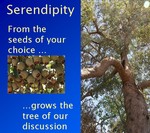 Our next session is an Edublogs “Serendipity” session on Thursday September 1stat 23:00 GMT/UTC (Afternoon/Evening USA) or Friday September 2nd at 7am West Aus, mid morning Eastern States Aus depending on your timezone (check yours here) – in the usual Elluminate room. This is one of our fortnightly unconference sessions where we invite you to bring along your “hot topics” and “burning issues” for our poll on the topic
Our next session is an Edublogs “Serendipity” session on Thursday September 1stat 23:00 GMT/UTC (Afternoon/Evening USA) or Friday September 2nd at 7am West Aus, mid morning Eastern States Aus depending on your timezone (check yours here) – in the usual Elluminate room. This is one of our fortnightly unconference sessions where we invite you to bring along your “hot topics” and “burning issues” for our poll on the topic

